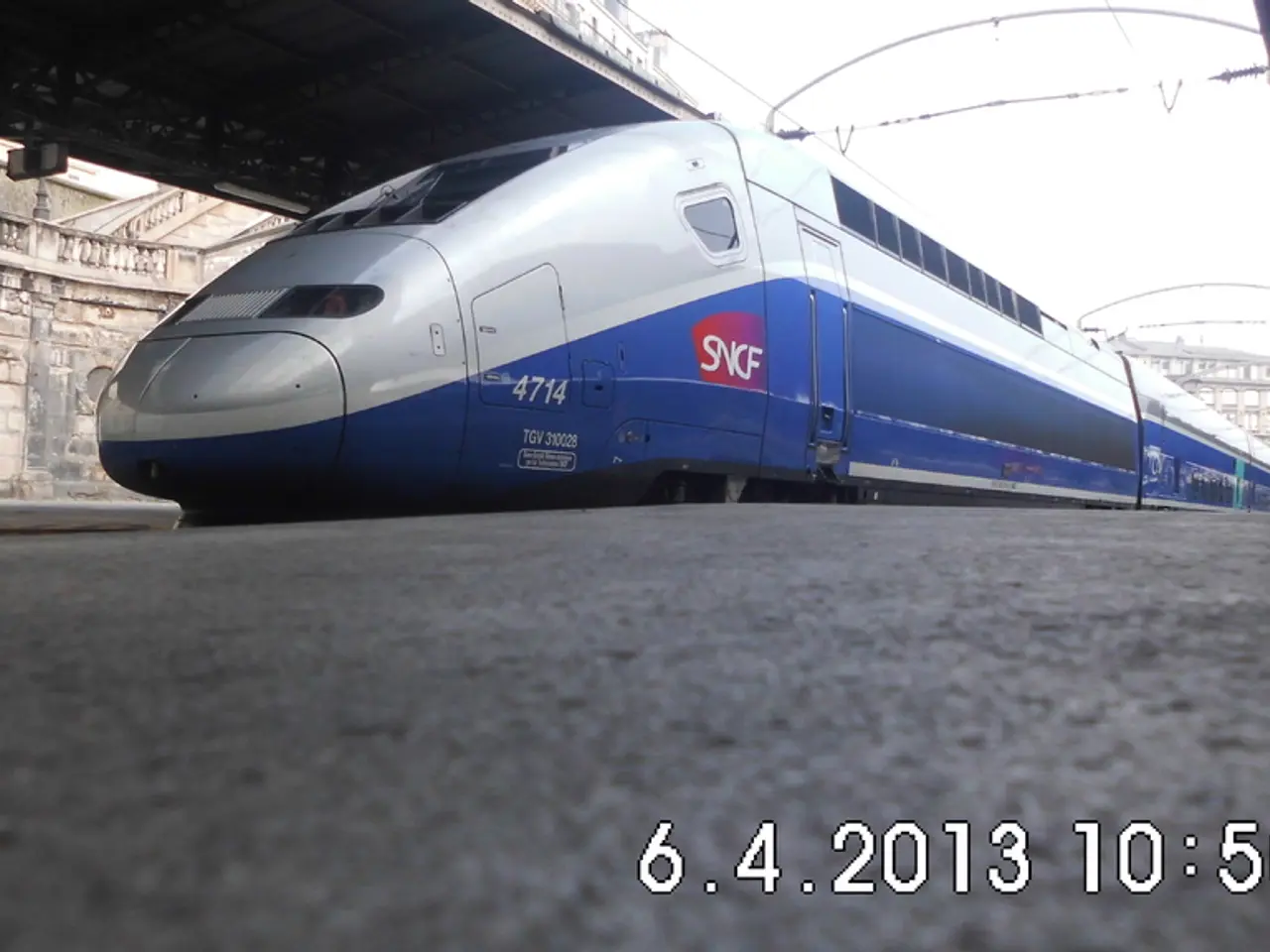Company delivers inaugural train for Line 6-Orange in São Paulo city.
In a significant development for São Paulo's metro expansion and urban mobility in Latin America, global mobility solutions provider Alstom has delivered the first train for Line 6-Orange (Linha 6-Laranja)[1][2][3]. This delivery marks a milestone in the city's public transport infrastructure.
## Key Features of the Train
The Line 6-Orange fleet comprises a total of 22 six-car trains, all manufactured at Alstom's factory in Taubaté, São Paulo[1][2][3]. Each train is capable of carrying up to 2,044 passengers, making it an essential component in addressing the city's growing transportation needs.
The trains, identified by their distinctive orange colour, are designed to reach speeds of up to 90 km/h[1][2][3]. Constructed from stainless steel, they are lighter than traditional carbon steel trains, resulting in reduced electricity consumption. Moreover, the trains are engineered to last more than 40 years, ensuring longevity and durability.
The interior layout is designed to improve the passenger experience, with attention to seat design, handrail height, and safety features, all optimized using Alstom’s Lab 4.0 virtual reality technology for early technical adjustments[1][2][3]. This focus on passenger comfort contributes to a more sustainable transport system in São Paulo[1].
## The University Line and Its Impact
The "university line," Line 6-Orange, will connect at least seven higher education institutions in São Paulo city and schools near Avenida Paulista[1]. Over 40% of trips on Line 6 are expected to involve travel to or from these educational institutions, making it a vital link for the city's student population. Most passengers on Line 6 are expected to be university-aged individuals between 18 and 24 years old[1].
The project is a public-private partnership (PPP) between the São Paulo State Government and the Concessionaire Linha Universidade[1]. The line connects the Brasiliândia neighbourhood in the North Zone to São Joaquim Station in the city center[1].
The Line 6-Orange is expected to transport around 633,000 passengers per day once fully operational[1][2]. The project, being executed by ACCIONA, is creating over 10,000 jobs[1]. Once completed, the line will be operated by the Concessionaire for 19 years[1].
Alstom's manufacturing site in Taubaté city has produced over 170 trains for cities including São Paulo (Brazil), Santiago (Chile), Taipei (Taiwan), and Bucharest (Romania)[1][2][3]. This delivery for Line 6-Orange in São Paulo further cements Alstom's position as a global leader in smart and sustainable mobility solutions.
[1] - Alstom press release, 2021 [2] - ACCIONA press release, 2021 [3] - São Paulo State Government press release, 2021
- The Line 6-Orange, a crucial component of São Paulo's growing transportation needs, consists of 22 six-car trains, each designed for 2,044 passengers and manufactured at Alstom's factory in Taubaté, São Paulo.
- These trains, identified by their distinctive orange color, are capable of reaching speeds of up to 90 km/h, are constructed from lighter stainless steel, and are engineered to last more than 40 years, ensuring longevity and durability in the city's public transport infrastructure.
- The university line, Line 6-Orange, connecting at least seven higher education institutions in São Paulo city, is a public-private partnership between the São Paulo State Government and the Concessionaire Linha Universidade, designed to provide a vital link for the city's student population and expected to transport around 633,000 passengers per day.
- The project, being executed by ACCIONA, is creating over 10,000 jobs and will be operated by the Concessionaire for 19 years, with Alstom's manufacturing site in Taubaté city having produced over 170 trains for various cities worldwide, further solidifying Alstom's position as a global leader in smart and sustainable mobility solutions.




